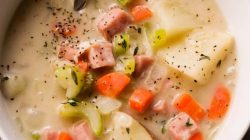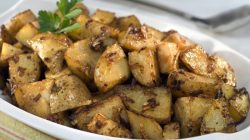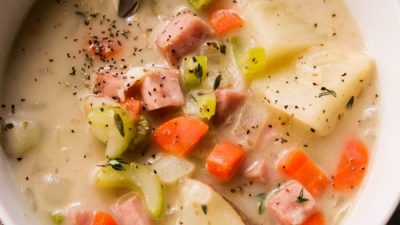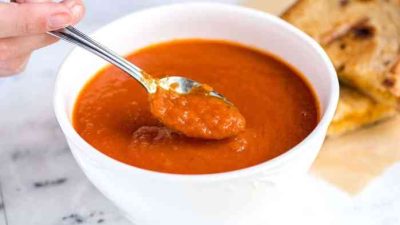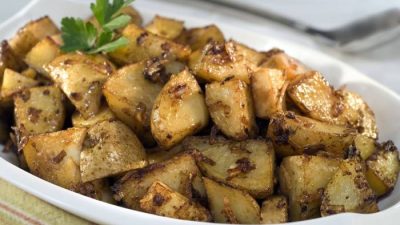Pressure Canning Soup: A Comprehensive Guide: Pressure Canning Soup Recipes
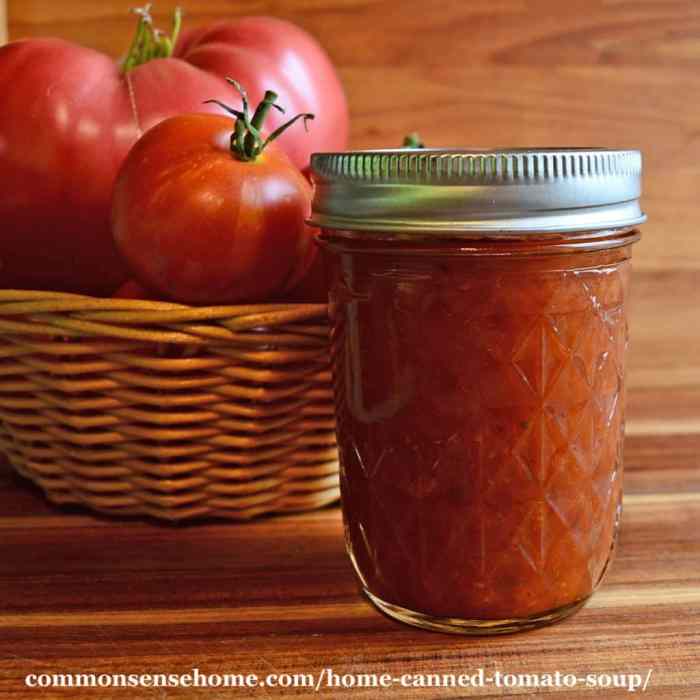
Source: commonsensehome.com
Pressure canning soup recipes – Pressure canning allows for safe long-term storage of many delicious soups. A hearty and flavorful option to consider for canning is a rich pork ribs soup; you might find a great recipe to adapt at pork ribs soup recipe. Remember to always follow proper canning procedures to ensure food safety when preserving your soups using this method.
Properly canned, these soups can provide delicious meals for months to come.
Pressure canning is a reliable method for preserving soups, extending their shelf life significantly while maintaining their nutritional value and flavor. This process utilizes high pressure and heat to destroy harmful microorganisms, ensuring the safety of your canned goods. Compared to other preservation methods like freezing or refrigeration, pressure canning offers a longer shelf life, allowing you to enjoy homemade soups throughout the year.
Introduction to Pressure Canning Soup
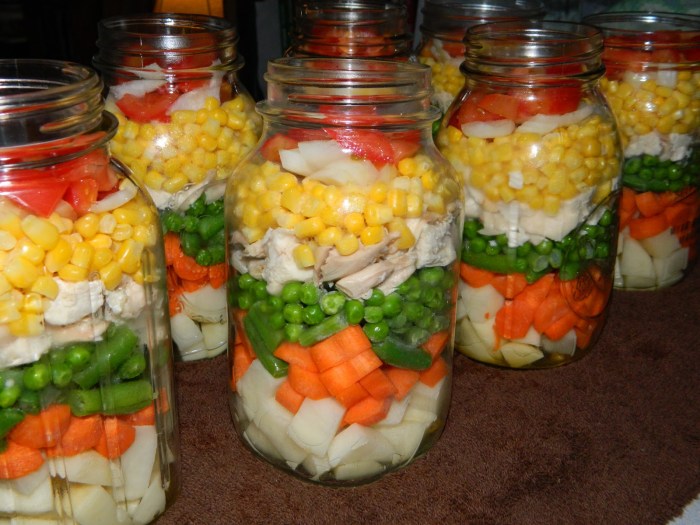
Source: thehomesteadsurvival.com
Pressure canning leverages steam pressure to achieve temperatures higher than those attainable through boiling water bath canning. This higher temperature is crucial for eliminating spoilage organisms, particularly those that can survive boiling temperatures. This method is particularly suitable for low-acid foods like soups, which are susceptible to botulism if not properly processed.
Pressure canning soups offers several advantages over other methods. Firstly, it provides a significantly longer shelf life – up to a year or more under proper storage conditions. Secondly, it preserves the flavor and texture of the soup better than freezing, which can sometimes alter the consistency. Finally, it’s a convenient way to store large batches of soup, freeing up freezer space and providing a readily available meal option.
Safety is paramount in pressure canning. Always follow precise instructions, ensuring proper pressure and processing times. Using a reliable pressure canner and regularly checking its gauge are essential safety precautions. Improper canning can lead to spoilage or, worse, botulism, a severe and potentially fatal illness. Thorough cleaning and sterilization of jars and equipment are also vital steps in preventing contamination.
Suitable Soup Types for Pressure Canning
Several soup types are well-suited for pressure canning. The ideal candidates are those with a relatively thick consistency and a balance of ingredients that hold up well under high heat and pressure. Soups with high water content pose challenges due to the increased processing time required and the potential for reduced texture quality.
Five excellent choices include:
- Hearty Vegetable Soup: The thick consistency and variety of vegetables make it ideal.
- Beef Stew: The meat and vegetables provide a dense mixture suitable for canning.
- Chicken Noodle Soup: The noodles hold their shape reasonably well under pressure canning.
- Lentil Soup: Lentils thicken the soup, reducing the risk of excessive water content.
- Creamy Tomato Soup (with added thickener): A thickener like cornstarch or flour is needed to prevent separation during processing.
Soups with high water content require longer processing times to ensure safety. This can affect the texture and flavor of the soup, potentially leading to a less desirable outcome. Preparing ingredients correctly is crucial; vegetables should be pre-cooked to ensure even processing and prevent uneven texture. Meats should be cooked to a safe internal temperature before canning.
Recipe Selection and Adaptation, Pressure canning soup recipes
Beginners should start with simple recipes that utilize readily available ingredients. Adjusting existing recipes for pressure canning requires careful consideration of ingredient ratios and processing times.
Here are three beginner-friendly recipes:
Recipe 1: Simple Vegetable Soup
Ingredients: 4 cups chopped vegetables (carrots, potatoes, celery, onions), 4 cups broth, 1 tsp salt, 1/2 tsp pepper.
Recipe 2: Chicken Noodle Soup
Ingredients: 4 cups cooked chicken, 4 cups broth, 1 cup cooked noodles, 1/2 cup chopped carrots, 1/4 cup chopped celery, salt and pepper to taste.
Recipe 3: Basic Lentil Soup
Ingredients: 1 cup lentils, 4 cups broth, 1 cup chopped carrots, 1/2 cup chopped celery, 1 onion, salt and pepper to taste.
Processing times vary depending on the density of the soup and altitude. Always consult a reliable pressure canning guide for specific recommendations based on your location and the type of soup you’re canning.
| Soup Type | Density | Processing Time (at 10 lbs pressure, sea level) | Notes |
|---|---|---|---|
| Simple Vegetable Soup | Medium | 75 minutes | Adjust time based on altitude |
| Chicken Noodle Soup | Medium | 90 minutes | Ensure noodles are cooked before canning |
| Lentil Soup | High | 75 minutes | Lentils will thicken during processing |
| Beef Stew | High | 90 minutes | Reduce liquid if stew is too thin |
Adapting existing recipes often involves adjusting the liquid content to achieve the desired density for safe processing. Thicker soups generally require shorter processing times. Always refer to a reliable canning guide for precise adjustments based on your recipe and altitude.
Equipment and Supplies
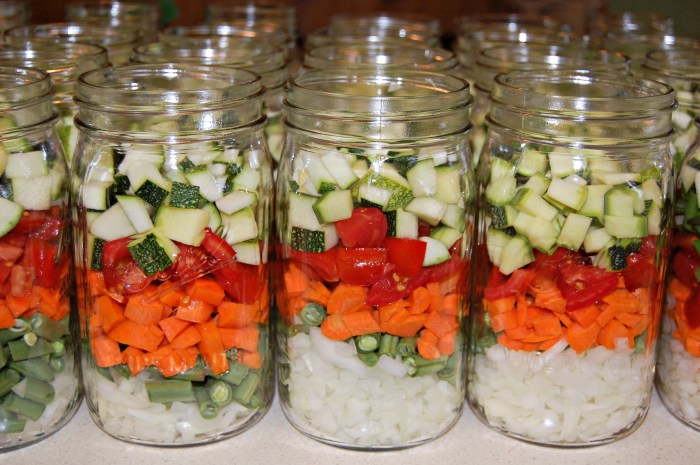
Source: onthebanksofsaltcreek.com
Having the right equipment is essential for safe and successful pressure canning. Each piece plays a critical role in the process, and their proper functioning is vital for preventing accidents and ensuring the quality of your canned goods.
- Pressure Canner: A large, heavy-duty pot with a pressure gauge and safety features.
- Jars and Lids: Mason jars with new lids and bands designed for pressure canning. Properly sized jars are essential for safe processing.
- Jar Lifter: A tool for safely removing hot jars from the canner.
- Bubble Remover: A tool to remove air bubbles from jars.
- Headspace Tool: Used to ensure the correct headspace in the jars, preventing improper sealing.
- Large Pot and Ladle: For preparing the soup and transferring it to jars.
- Canning Utensils: Tongs, funnel, and other tools to assist with filling and processing.
Step-by-Step Canning Process
The pressure canning process involves several crucial steps, each contributing to the safety and quality of the final product. Proper jar preparation, filling, processing, and cooling are all essential.
Jar Preparation: Wash jars and lids in hot, soapy water. Sterilize jars in a boiling water bath. Keep jars hot until filling.
Filling: Ladle hot soup into jars, leaving the correct headspace (usually 1 inch). Remove air bubbles by running a non-metallic utensil around the inside of the jar. Wipe jar rims clean.
Visual Representation of Jar Filling: Imagine a wide-mouth mason jar. The soup fills the jar, leaving approximately one inch of space between the soup’s surface and the jar’s rim. This headspace allows for expansion during processing. The lids are placed on top, and the bands are tightened fingertip tight.
Processing: Place filled jars in the pressure canner, ensuring they are covered with enough water. Process according to the recommended time and pressure for your specific recipe and altitude.
Cooling: Allow the canner to cool naturally. Do not force the release of pressure. Once cooled, remove jars carefully and check seals. Store in a cool, dark, and dry place.
Troubleshooting: If jars don’t seal, check for air bubbles, improper headspace, or damaged lids. If the pressure gauge malfunctions, discontinue processing and contact a professional for repairs. Never reuse jars with damaged seals.
Storage and Shelf Life
Proper storage is critical for maintaining the quality and safety of canned soup. Consistent temperature and darkness are vital to prevent spoilage.
Store canned soup in a cool, dark, and dry location with temperatures below 70°F (21°C). Under ideal conditions, pressure-canned soup can last for 12-18 months. However, it’s advisable to use it within a year for optimal flavor and quality.
Signs of spoilage include bulging lids, leakage, mold, unusual odors, or changes in texture or color. Discard any canned soup exhibiting these signs.
Recipe Variations and Experimentation
Once you’ve mastered basic pressure canning, you can explore various flavor combinations and ingredient adjustments. Experimentation allows for creative culinary exploration within the safe parameters of pressure canning.
Example Variations (using Simple Vegetable Soup as a base):
- Spicy Vegetable Soup: Add a pinch of cayenne pepper or a diced jalapeño for a spicy kick.
- Mediterranean Vegetable Soup: Incorporate sun-dried tomatoes, Kalamata olives, and oregano for a Mediterranean twist.
- Creamy Vegetable Soup: Stir in a dollop of cream or coconut milk before canning (ensure proper processing time adjustments).
Pressure-canned soup generally retains its flavor well, though some subtle differences in texture may occur compared to freshly made soup. Freshly made soup often has a more vibrant color and potentially a slightly more delicate texture. However, the convenience and extended shelf life of pressure-canned soup make it a valuable preservation method.
When experimenting, start with small adjustments to your recipes. Always ensure your processing times are appropriate for the ingredients and density of your soup. Refer to reliable canning resources to ensure safety.
FAQ Compilation
Can I pressure can any type of soup?
No. Soups with high starch content (like cream soups) or those containing dairy are not recommended for pressure canning due to potential for spoilage.
What happens if I don’t process my soup long enough?
Under-processing can lead to botulism, a serious and potentially fatal foodborne illness. Always follow recommended processing times precisely.
How long will pressure-canned soup last?
Properly canned soup will typically last 12-18 months under ideal storage conditions (cool, dark, and dry).
What are the signs of spoilage in canned soup?
Signs of spoilage include bulging lids, leaking jars, mold growth, or a sour or off odor.




